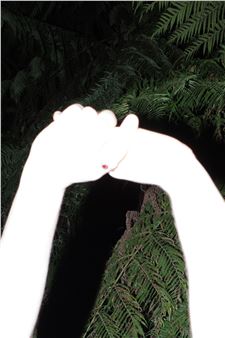Art Nouveau: The Great Utopian Vision
In its exhibition entitled вҖңArt Nouveau. The Great Utopian VisionвҖқ, the Museum fГјr Kunst und Gewerbe Hamburg (MKG), accompanied by a newly designed presentation of its existing Art Nouveau Collection, retraces an era which produced so much more than whimsically playful ornamentation. Art Nouveau defined itself via reform movements, visions and Utopian dreams aimed at renewing society. The special exhibition throws light on this cultural and historical background and development, drawing together the ideas linking Karl MarxвҖҳs вҖңDas KapitalвҖқ and Peter BehrensвҖҷs salon grand piano with symbols quoted from Friedrich NietzscheвҖҷs вҖңZarathustraвҖқ. It shows reform movement robes, a solar bath for sun-worshippers, photographs of nudists playing sports in the open air or LoГҜe FullerвҖҷs celebrated light dances. The arts take up the revolutionary changes affecting the private and social life of modern man, sketch new models for living and experiment with technical innovations. Gustav Klimt, Edvard Munch and Alfons Mucha reflect the many-facetted perceptions projected onto women. Ferdinand Hodler, Paula Modersohn-Becker focus on the child. And a constantly recurring source of inspiration is nature, especially in the applied arts. Art Nouveau also marks a hiatus for the museums of arts and crafts, which had up to then only shown examples from history. This is the period when they also begin to collect contemporary art. The new design of the Art Nouveau collection of the MKG, today almost unparalleled, takes its cue from the first presentation which its founder Justus Brinckmann compiled in 1900 with the objects he had purchased at the Paris World Exhibition. In addition, with furniture and room ensembles by, among others, Henry van de Velde, Richard Riemerschmid, Charles Rennie Mackintosh or Carlo Bugatti, it illustrates the wide spectrum of aesthetic conceptions and formal language at the beginning of the 20th century. The project shows more than 350 works in all, including painting, sculpture, prints, photography, drawings, ceramics, glass art, book art, fashion, textile art, posters, historical films, scientific and medical-technical apparatus and models.

Recommended for you
In its exhibition entitled вҖңArt Nouveau. The Great Utopian VisionвҖқ, the Museum fГјr Kunst und Gewerbe Hamburg (MKG), accompanied by a newly designed presentation of its existing Art Nouveau Collection, retraces an era which produced so much more than whimsically playful ornamentation. Art Nouveau defined itself via reform movements, visions and Utopian dreams aimed at renewing society. The special exhibition throws light on this cultural and historical background and development, drawing together the ideas linking Karl MarxвҖҳs вҖңDas KapitalвҖқ and Peter BehrensвҖҷs salon grand piano with symbols quoted from Friedrich NietzscheвҖҷs вҖңZarathustraвҖқ. It shows reform movement robes, a solar bath for sun-worshippers, photographs of nudists playing sports in the open air or LoГҜe FullerвҖҷs celebrated light dances. The arts take up the revolutionary changes affecting the private and social life of modern man, sketch new models for living and experiment with technical innovations. Gustav Klimt, Edvard Munch and Alfons Mucha reflect the many-facetted perceptions projected onto women. Ferdinand Hodler, Paula Modersohn-Becker focus on the child. And a constantly recurring source of inspiration is nature, especially in the applied arts. Art Nouveau also marks a hiatus for the museums of arts and crafts, which had up to then only shown examples from history. This is the period when they also begin to collect contemporary art. The new design of the Art Nouveau collection of the MKG, today almost unparalleled, takes its cue from the first presentation which its founder Justus Brinckmann compiled in 1900 with the objects he had purchased at the Paris World Exhibition. In addition, with furniture and room ensembles by, among others, Henry van de Velde, Richard Riemerschmid, Charles Rennie Mackintosh or Carlo Bugatti, it illustrates the wide spectrum of aesthetic conceptions and formal language at the beginning of the 20th century. The project shows more than 350 works in all, including painting, sculpture, prints, photography, drawings, ceramics, glass art, book art, fashion, textile art, posters, historical films, scientific and medical-technical apparatus and models.
Artists on show
- Alphonse Mucha
- Carlo Bugatti
- Charles Rennie Mackintosh
- Dante Gabriel Rossetti
- Dora PhilippineвҖҸ Kallmus
- Edward Burne-Jones
- Elena Luksch-Makowsky
- Emile Gallé
- ÉmileвҖҸ Henri Bernard
- Fernand Khnopff
- Gustav Klimt
- Henry van de Velde
- Josef Hoffmann
- Josef Hoffmann
- Karl Gräser
- Loie Fuller
- Louis Comfort Tiffany
- Louis Majorelle
- Mariano Fortuny y Marsal
- Paul Gauguin
- Paula Modersohn-Becker
- Peter Behrens
- René Lalique
- Richard Riemerschmid
















